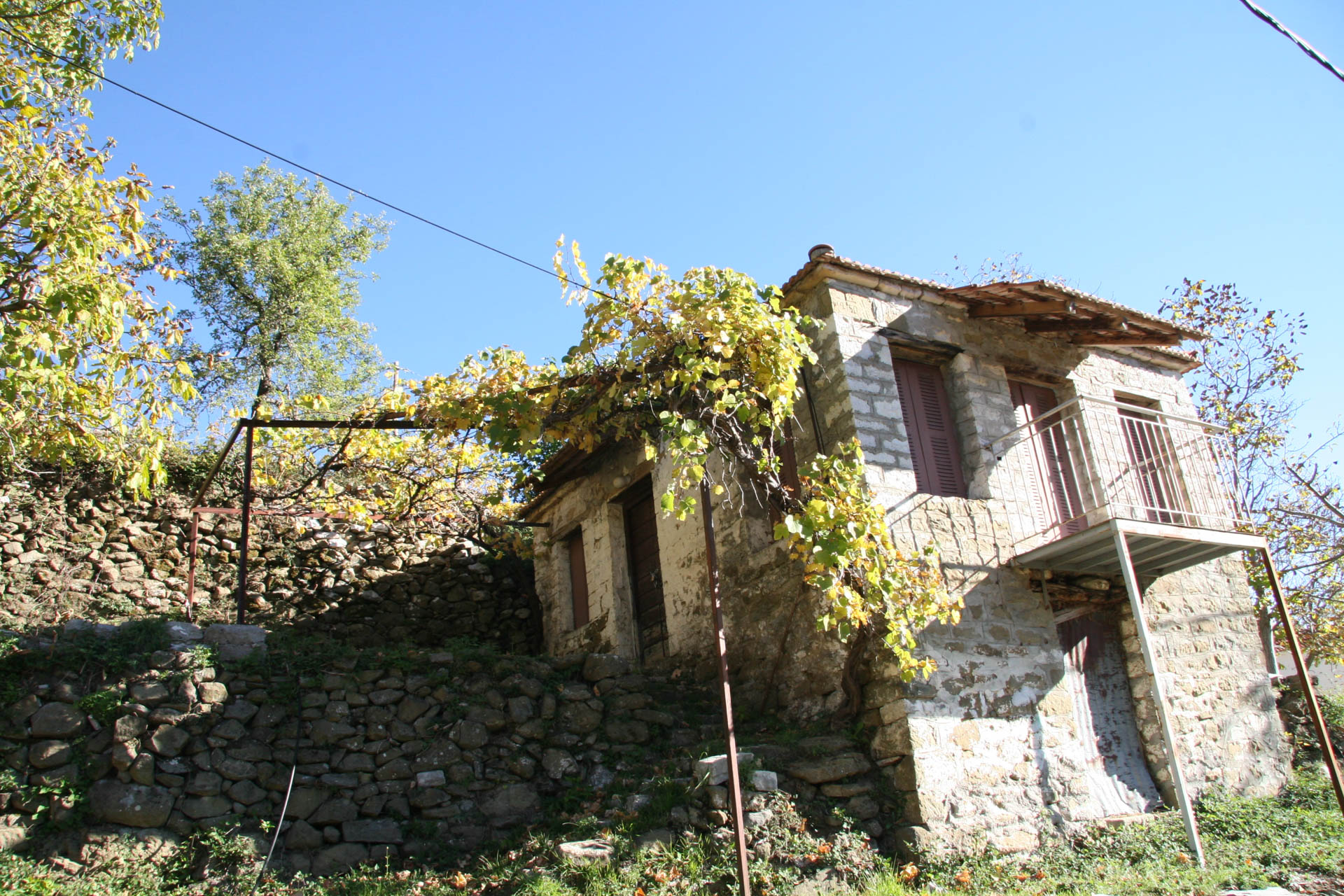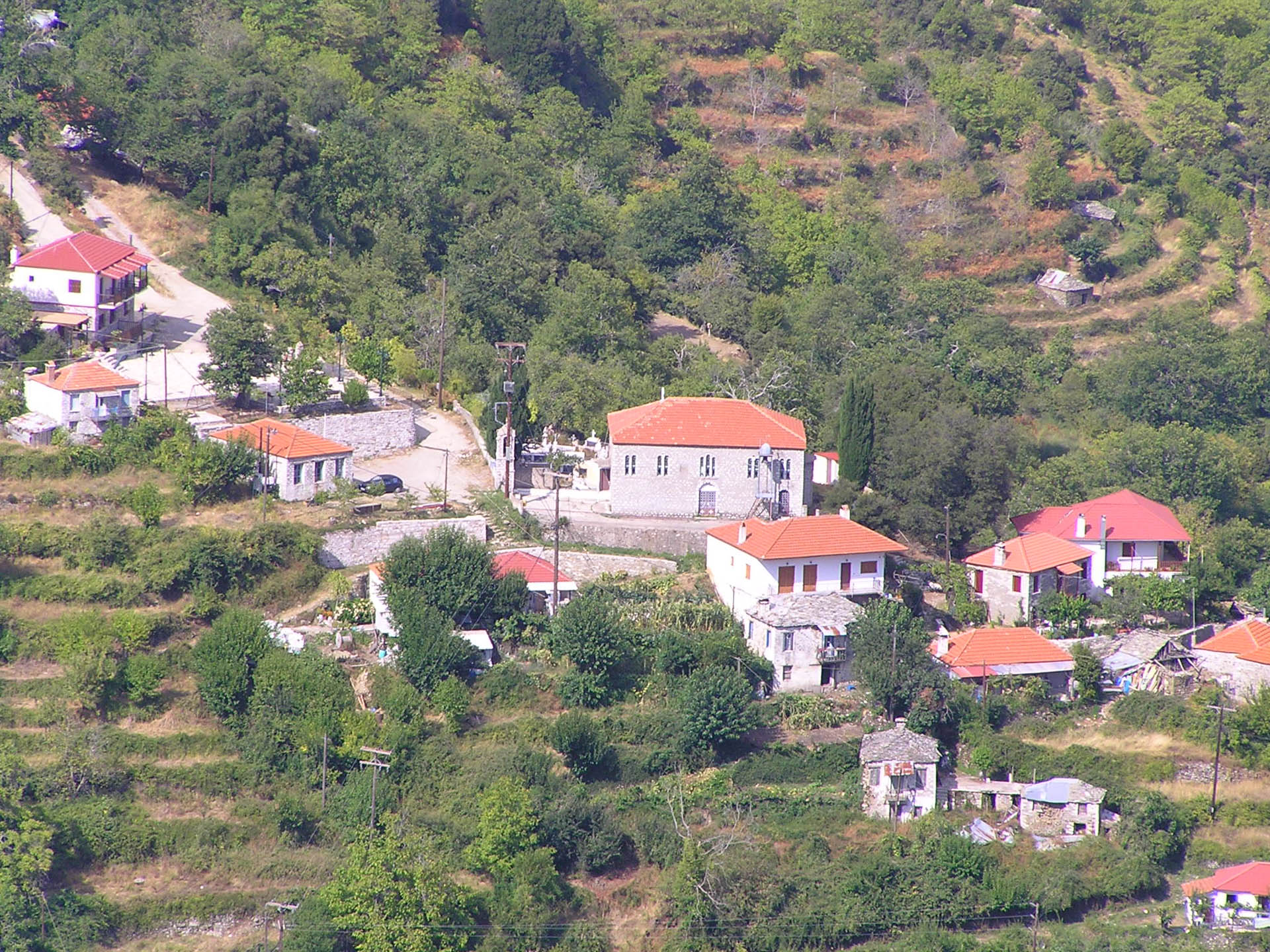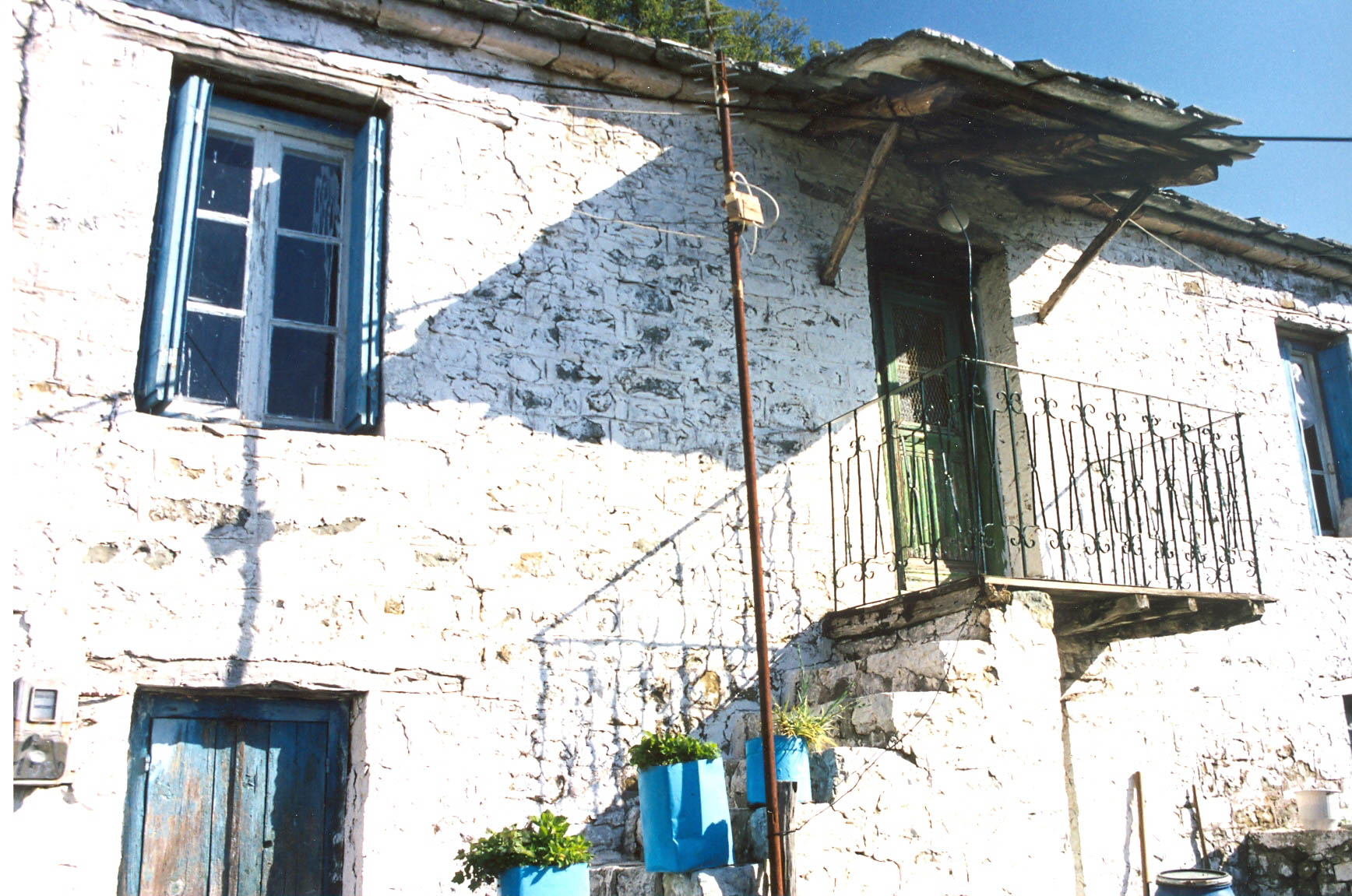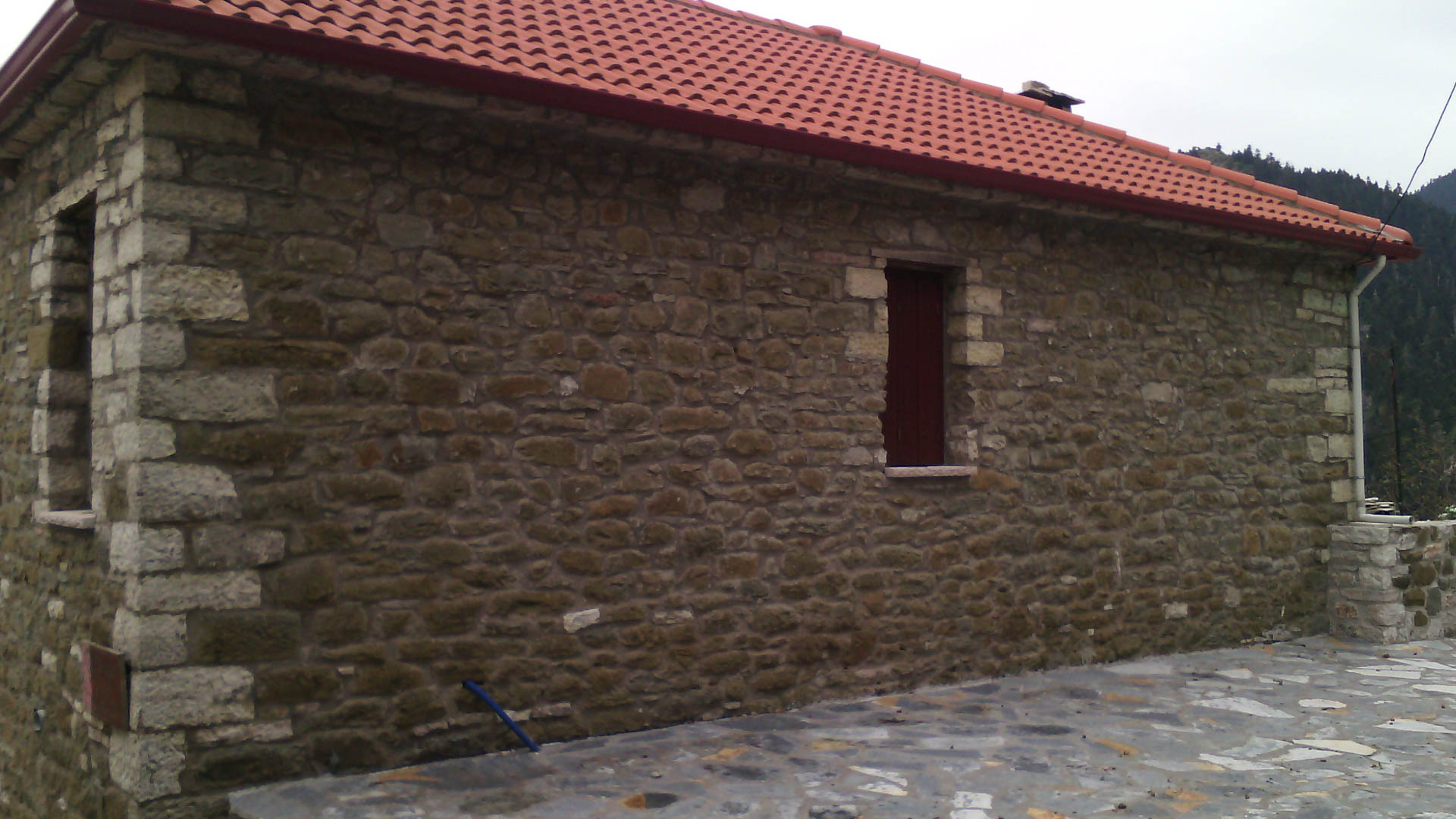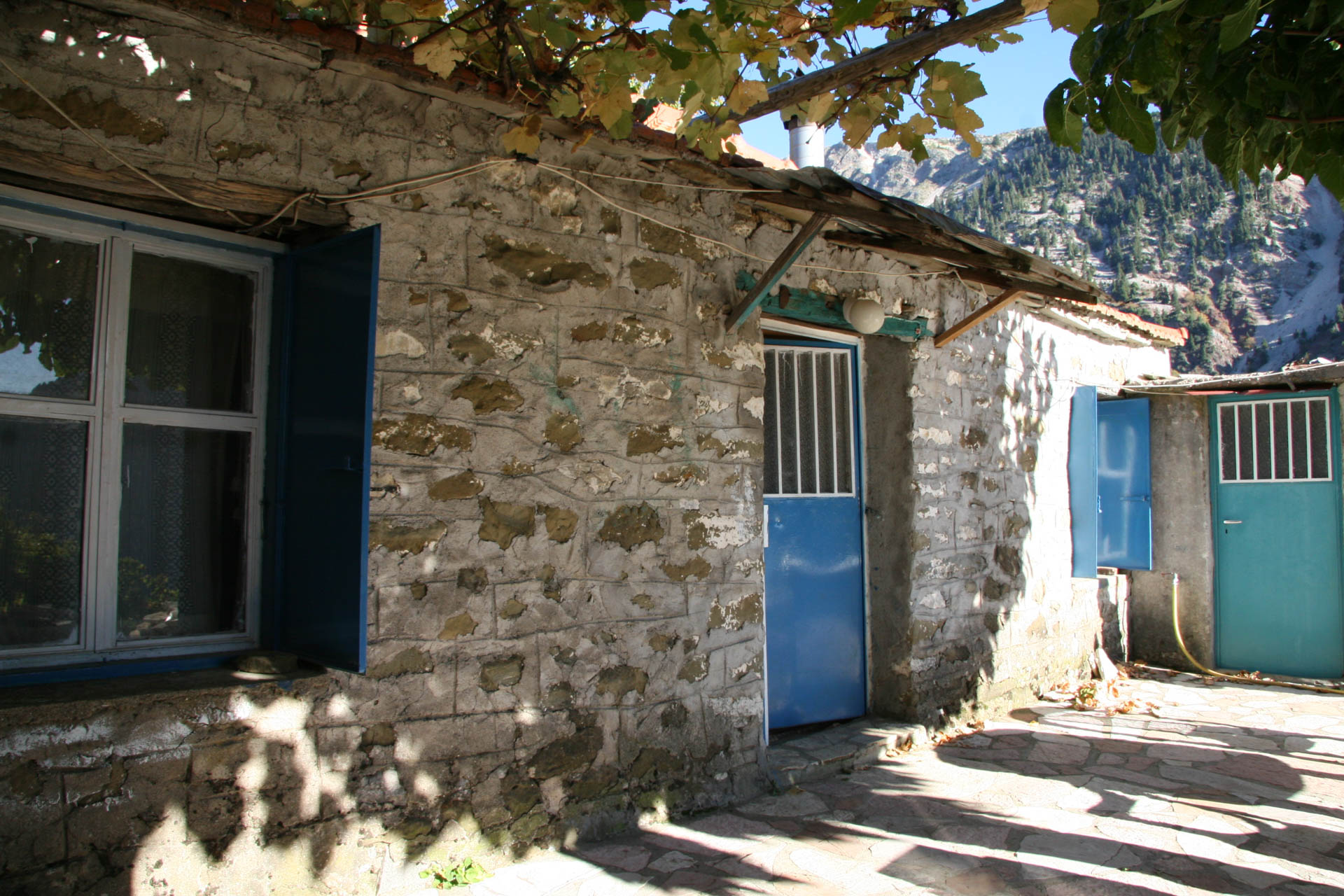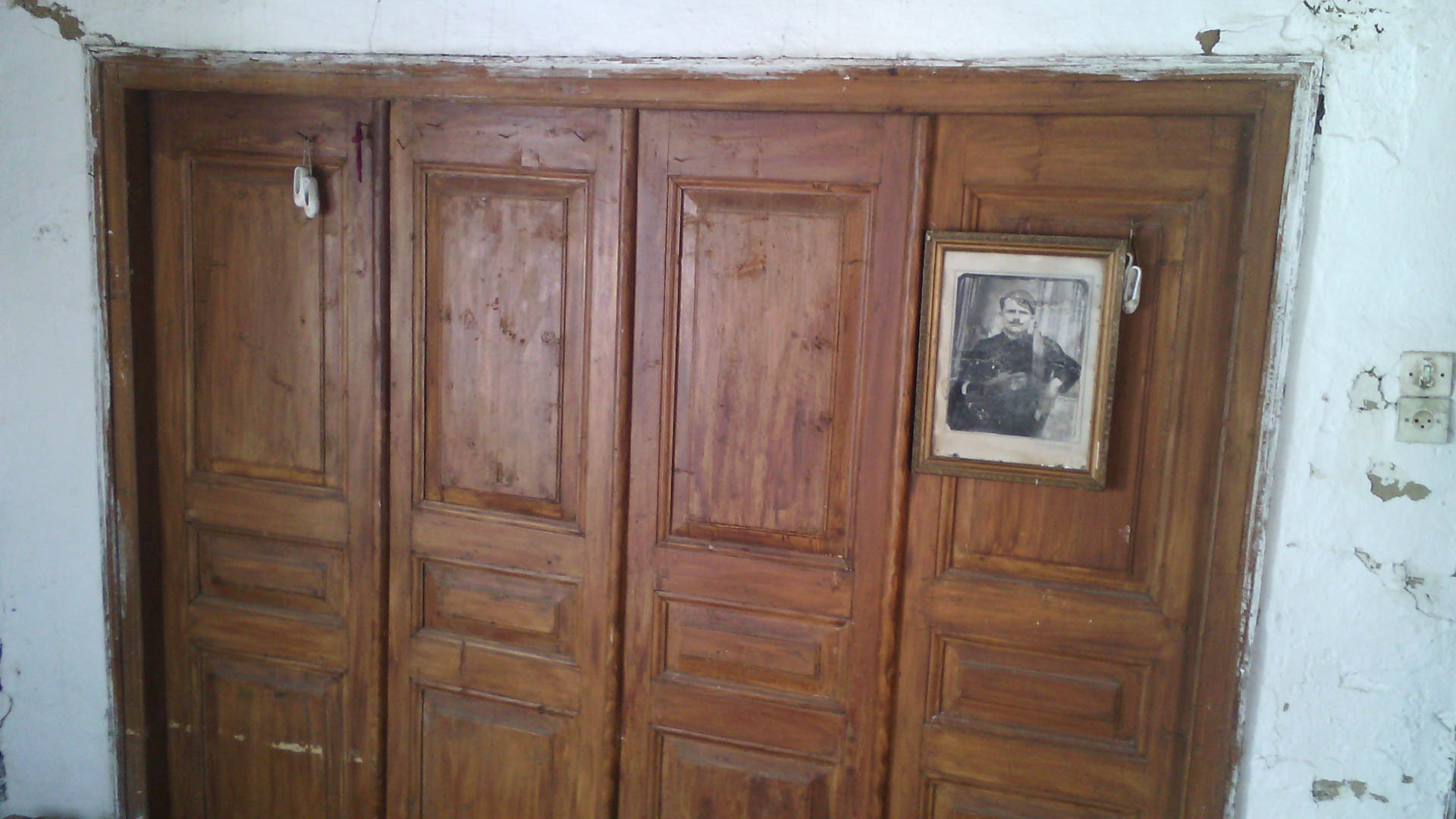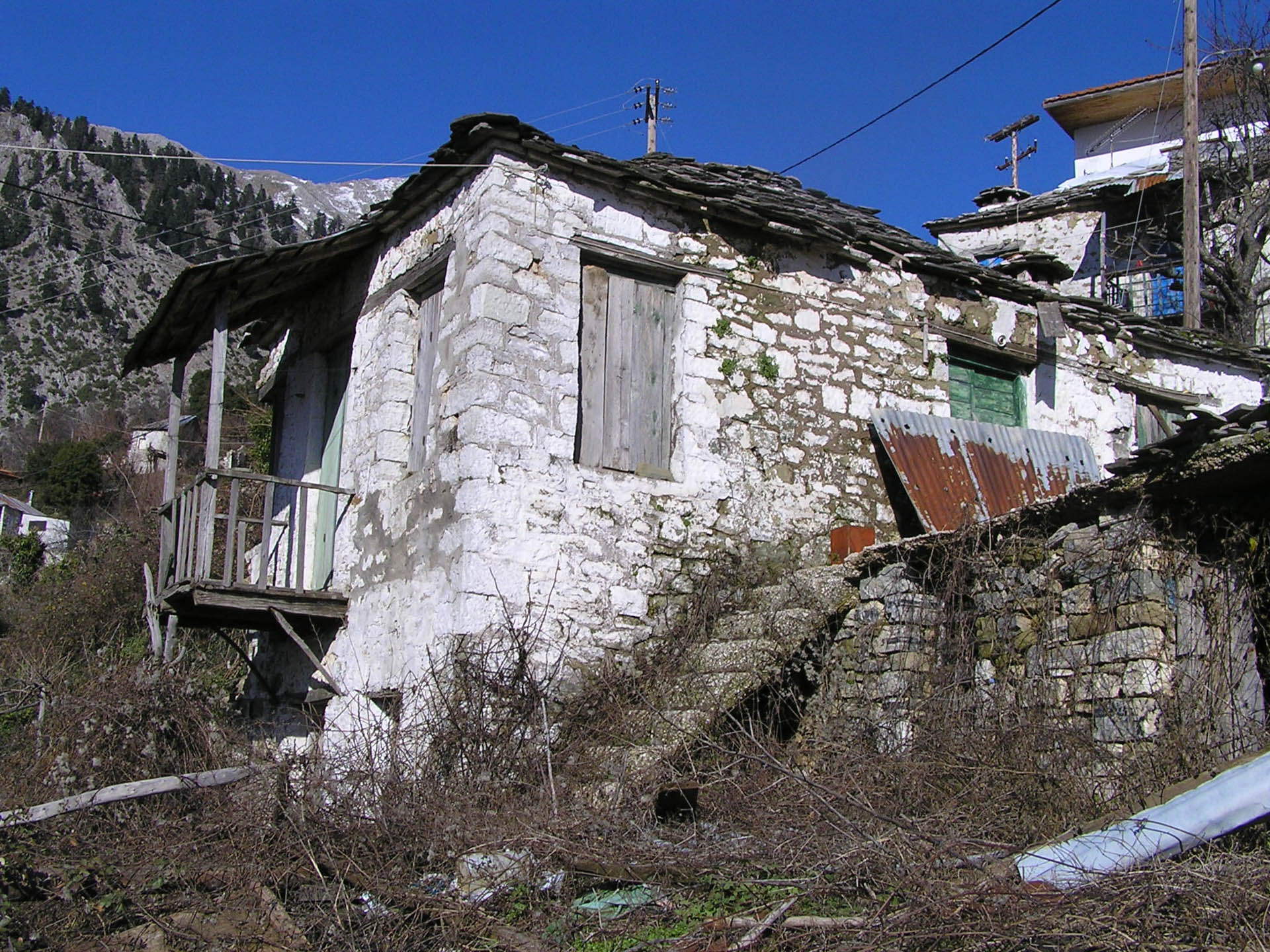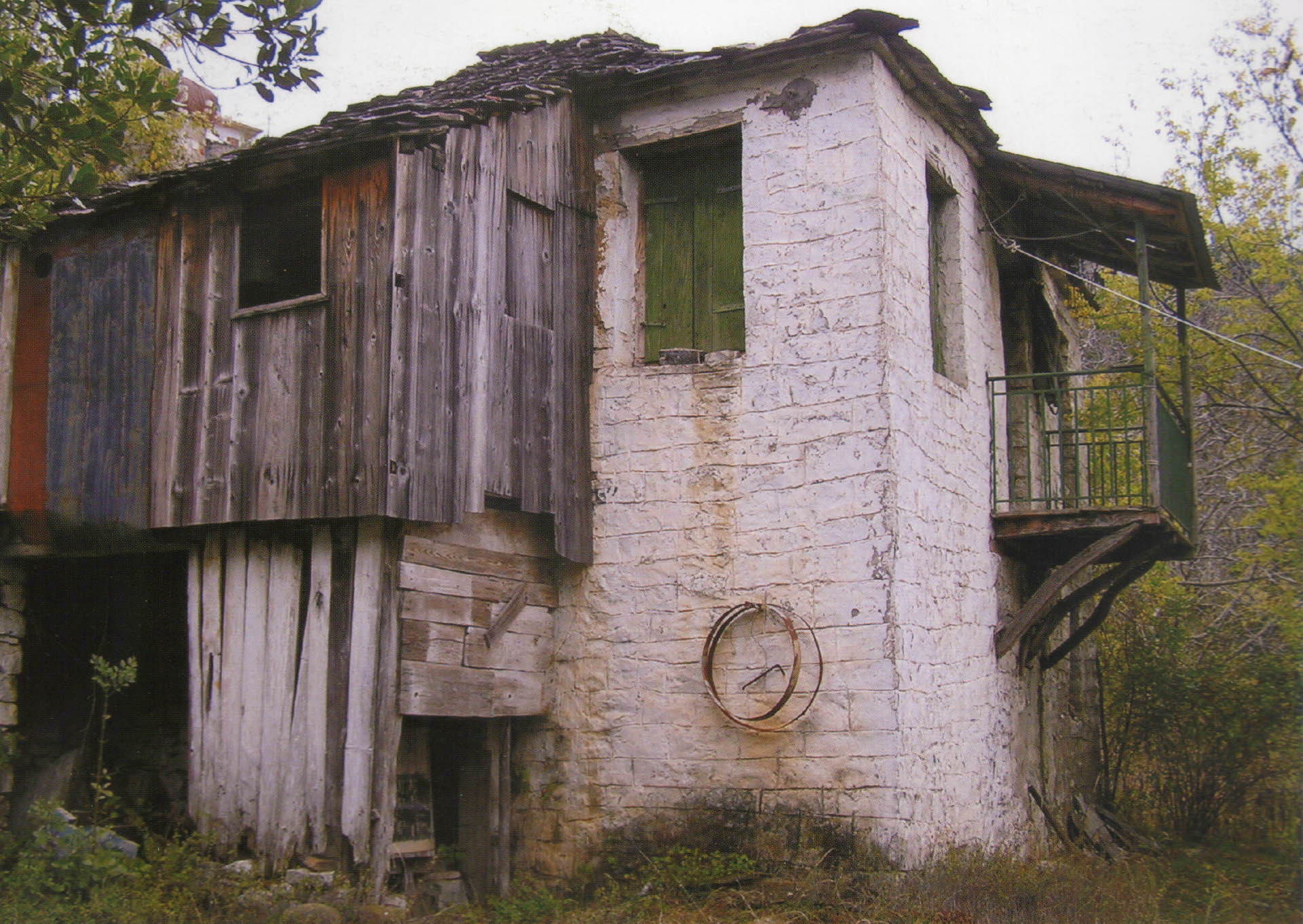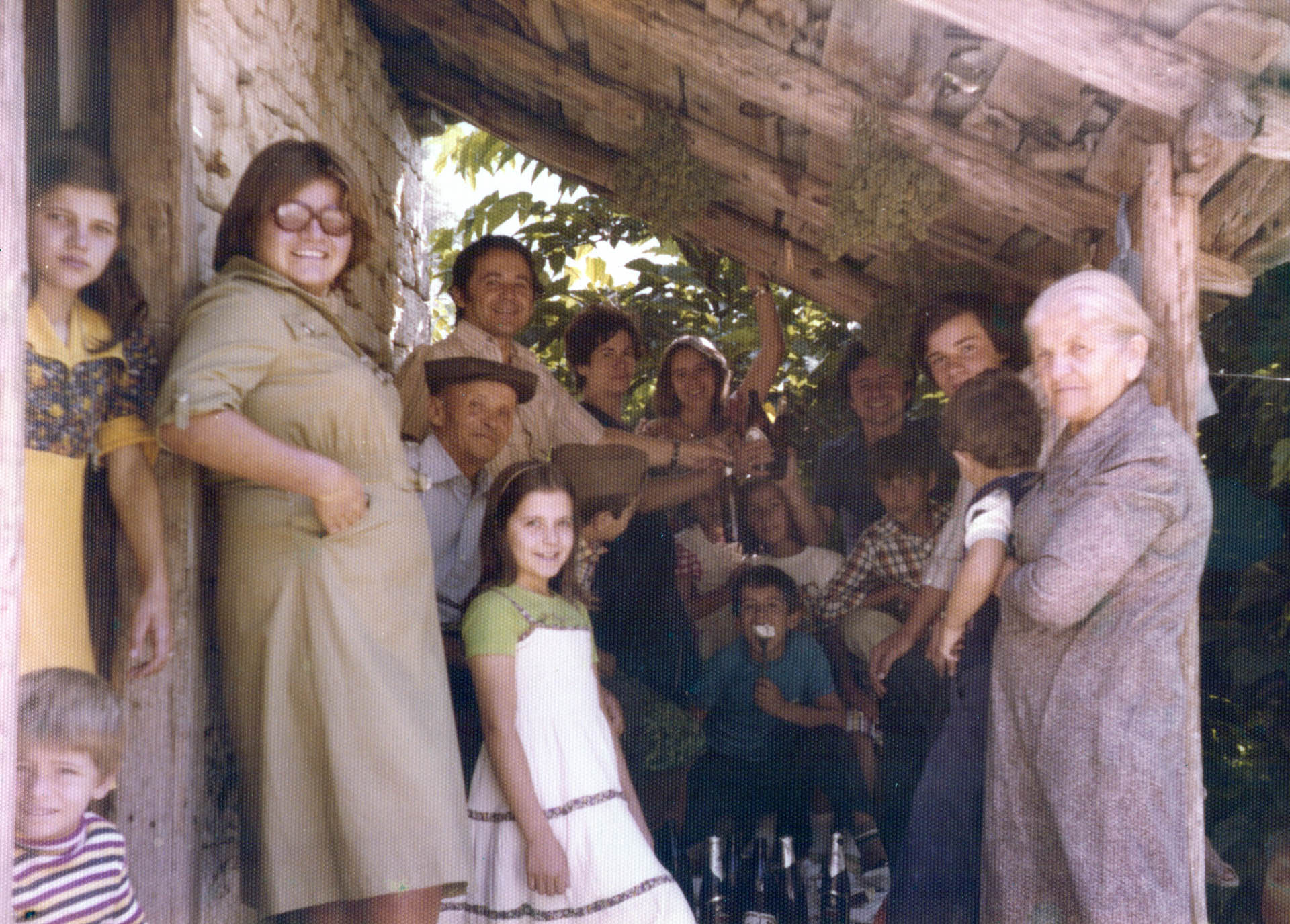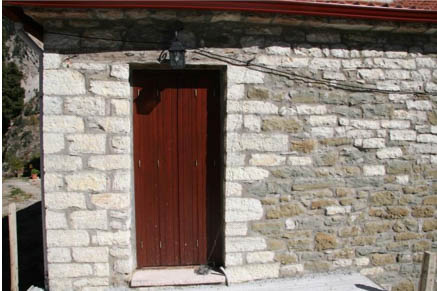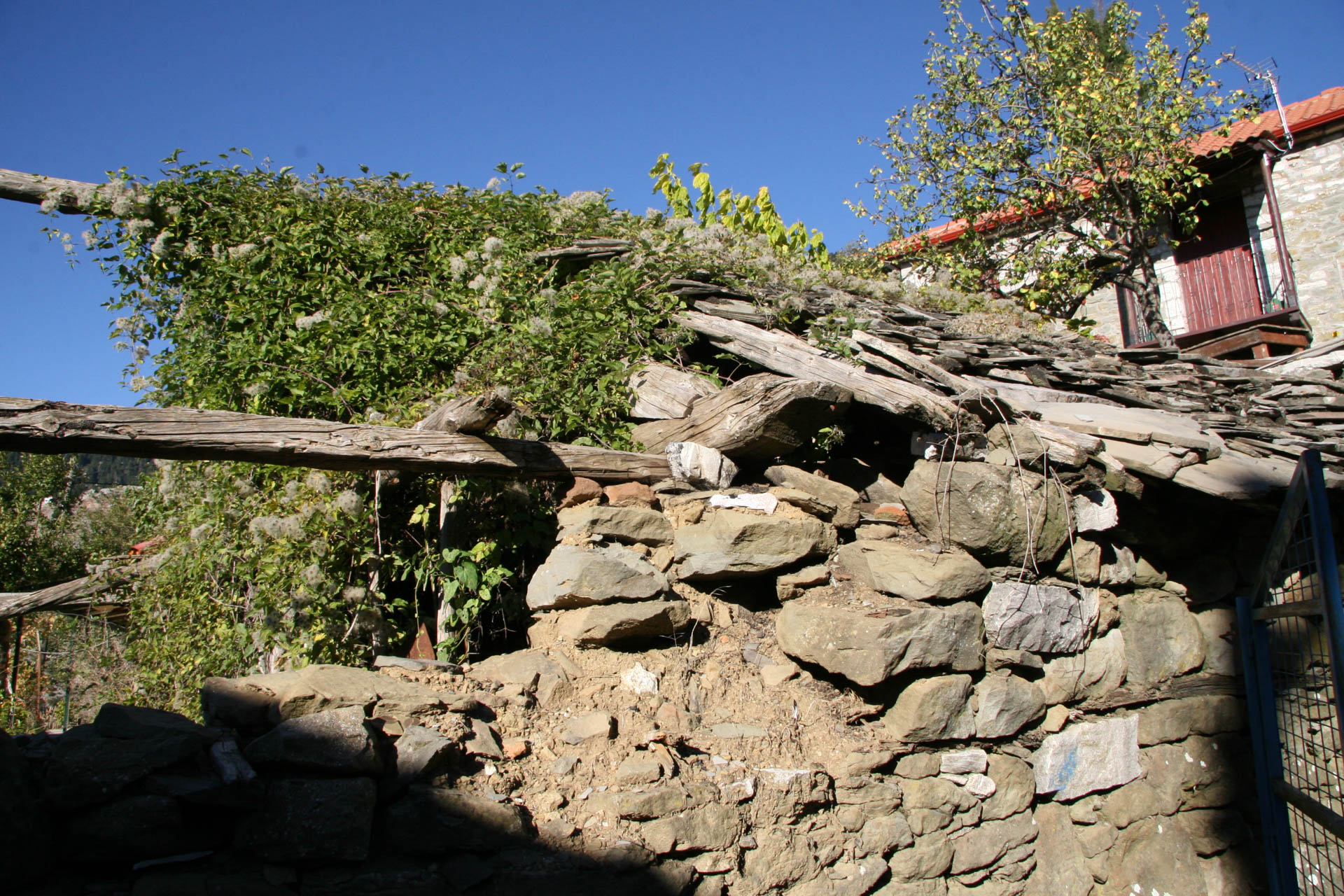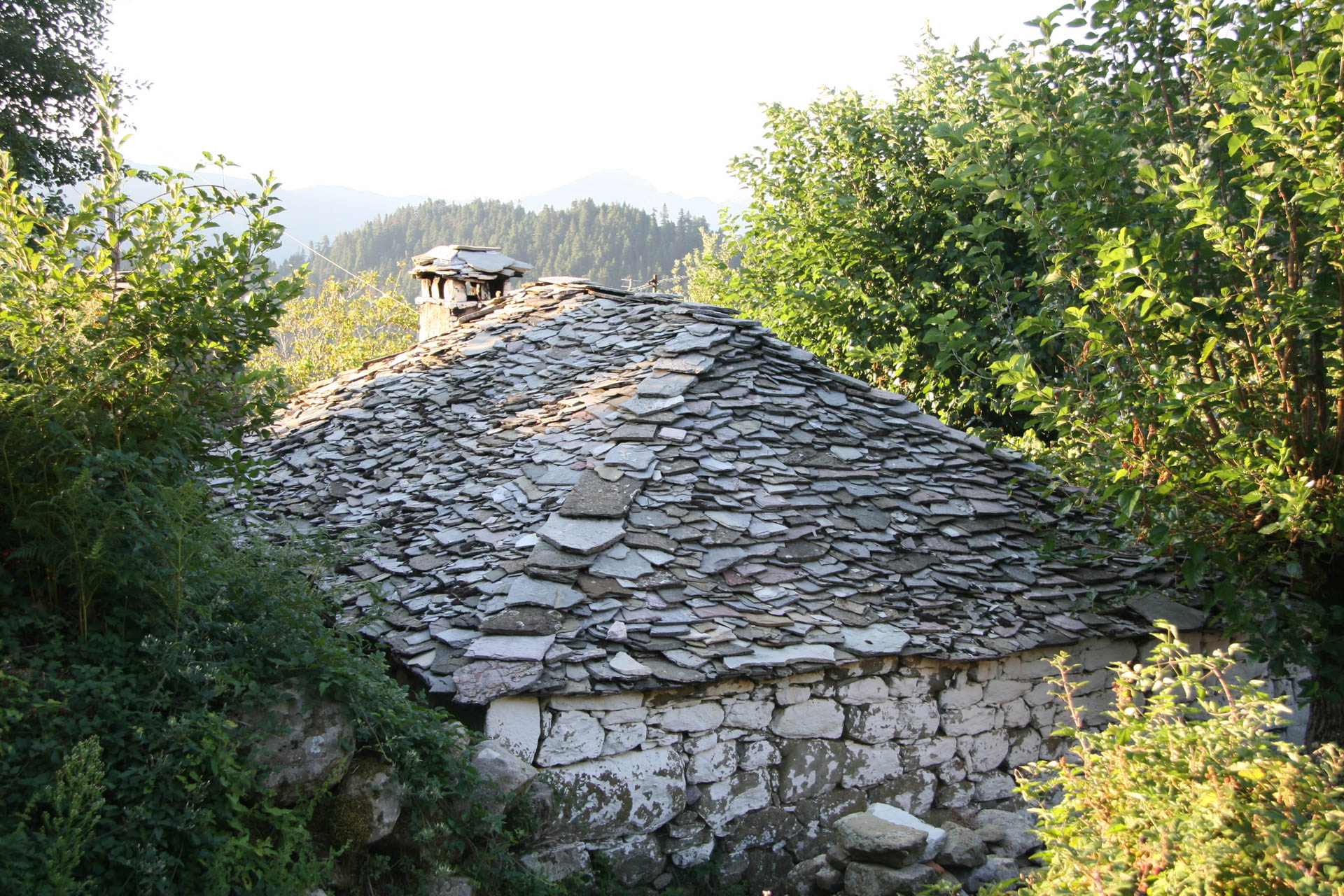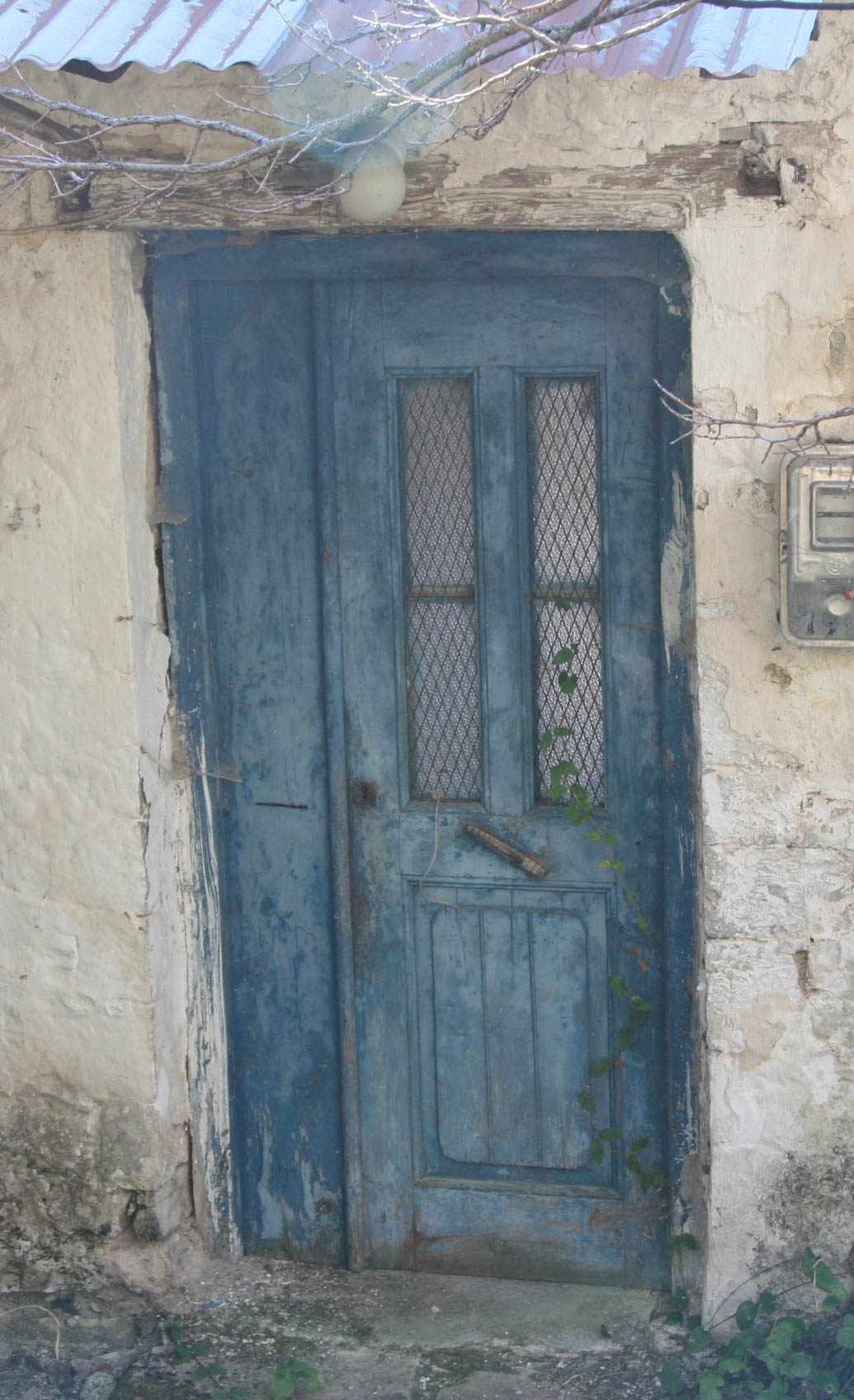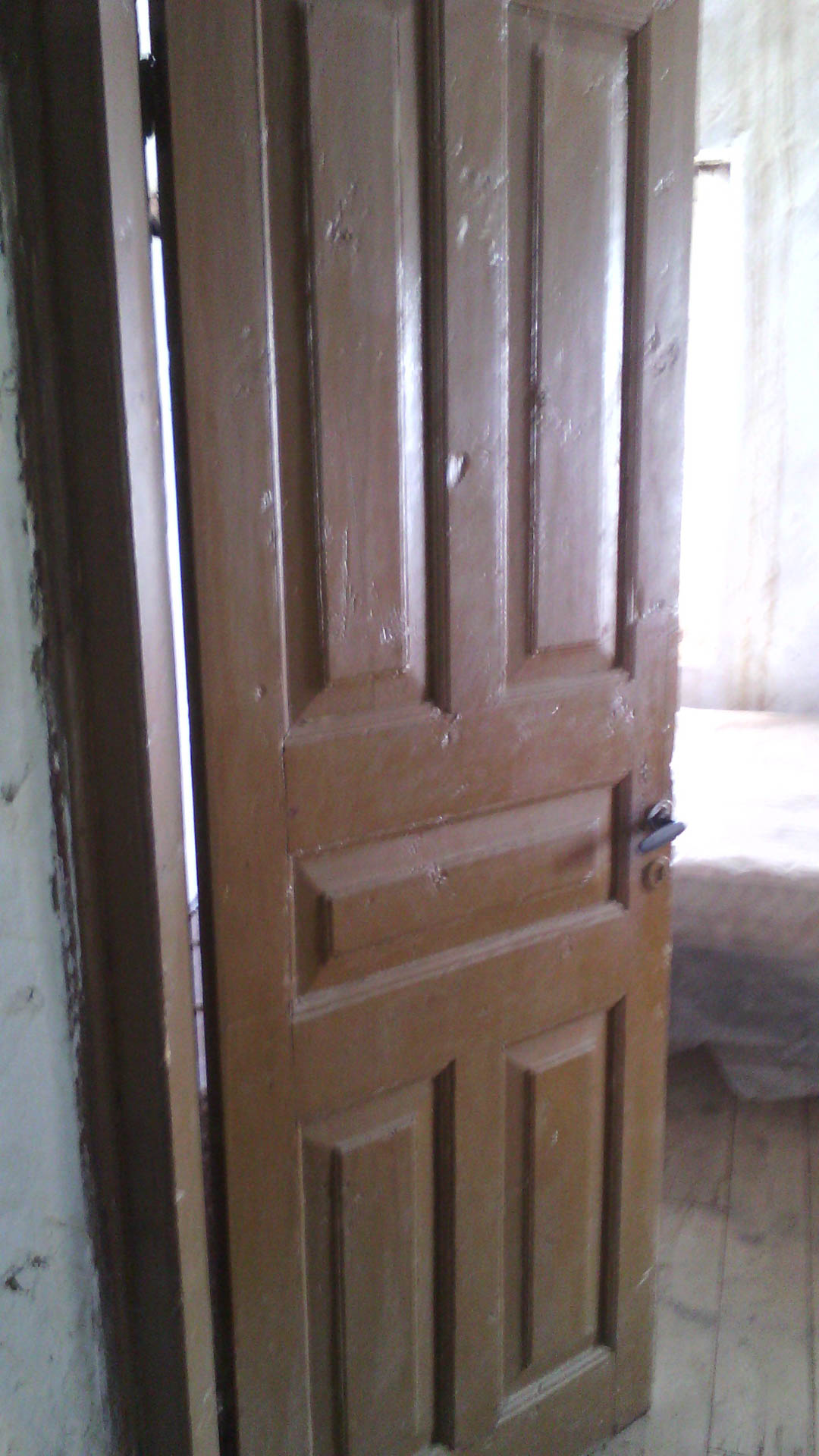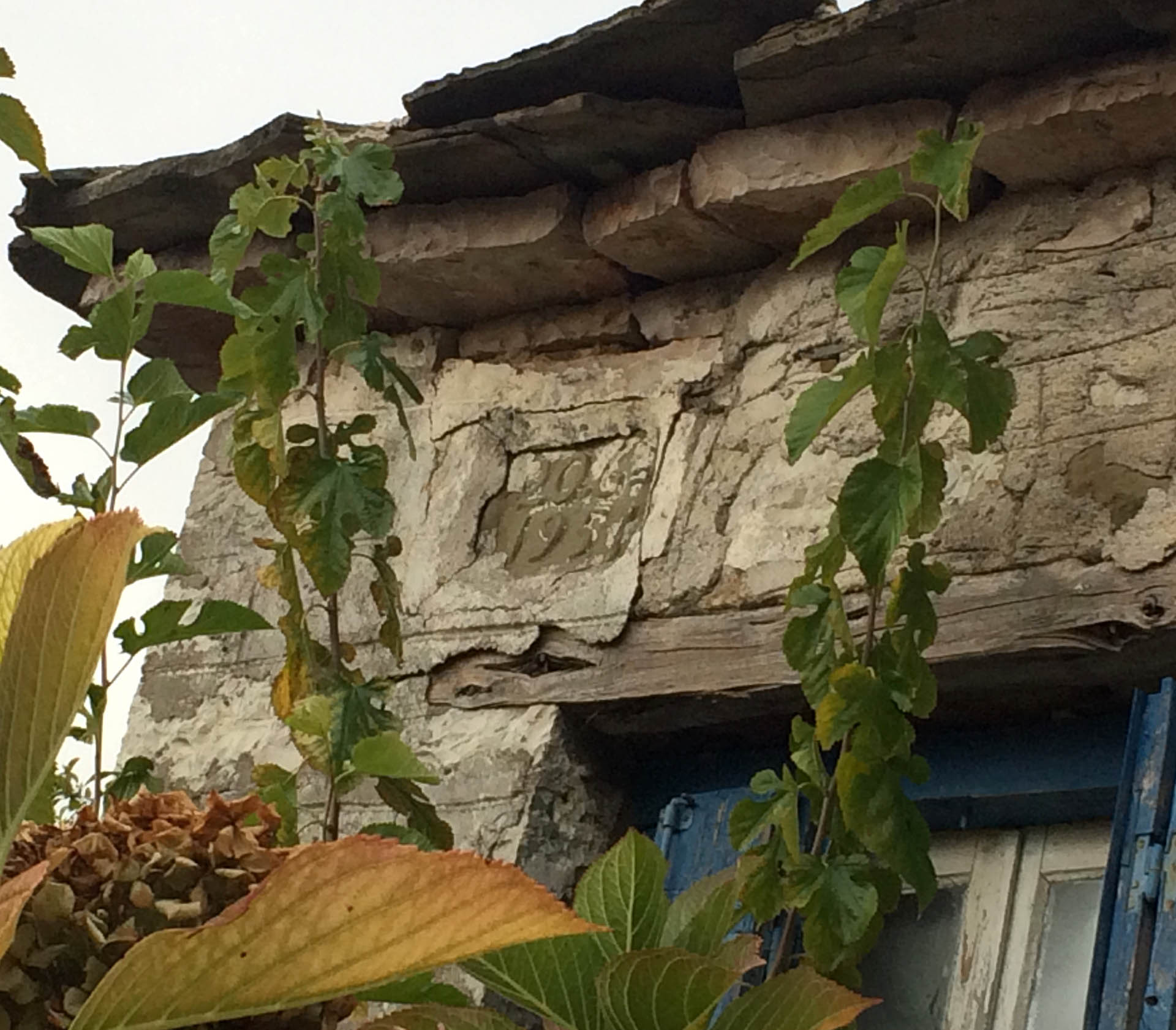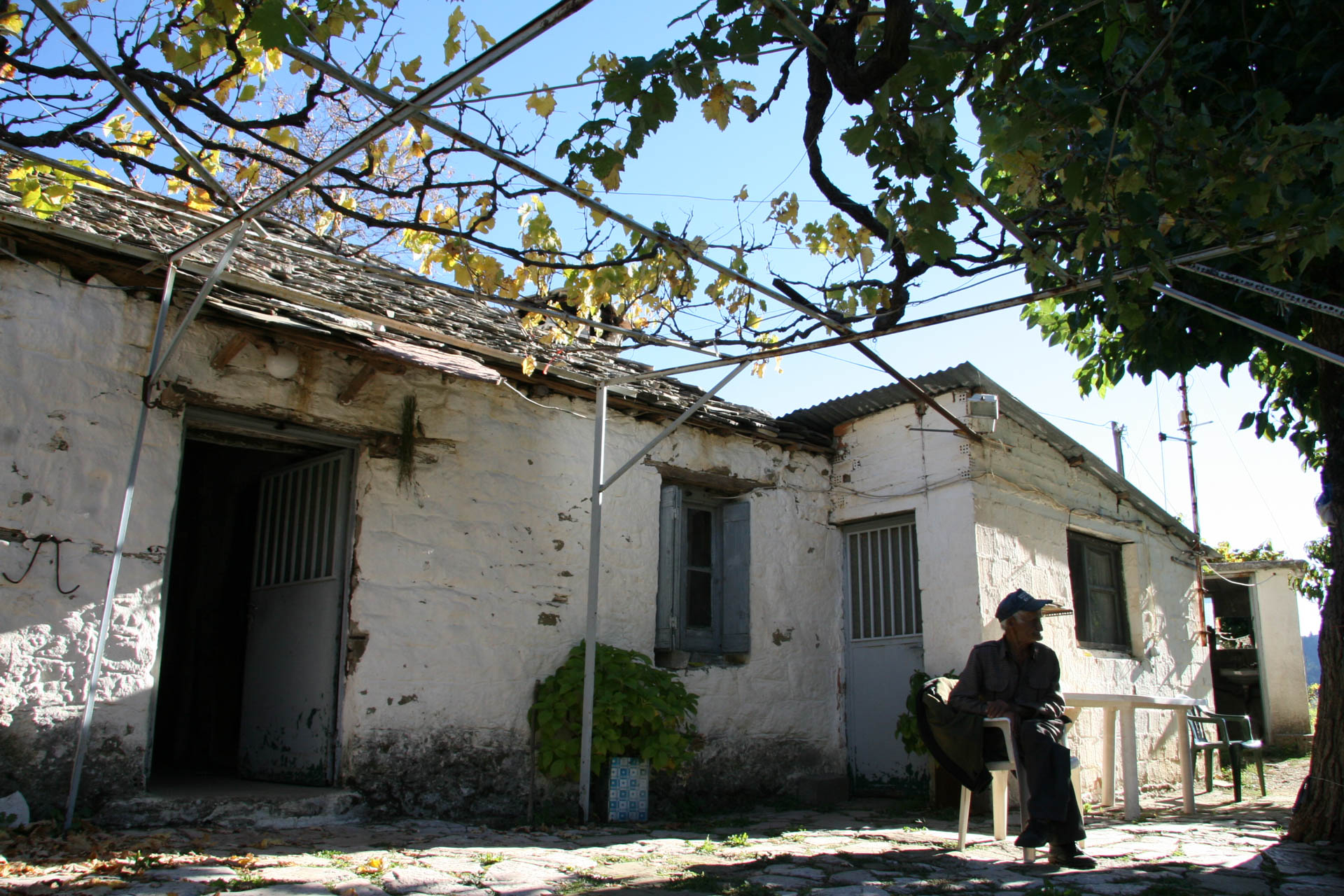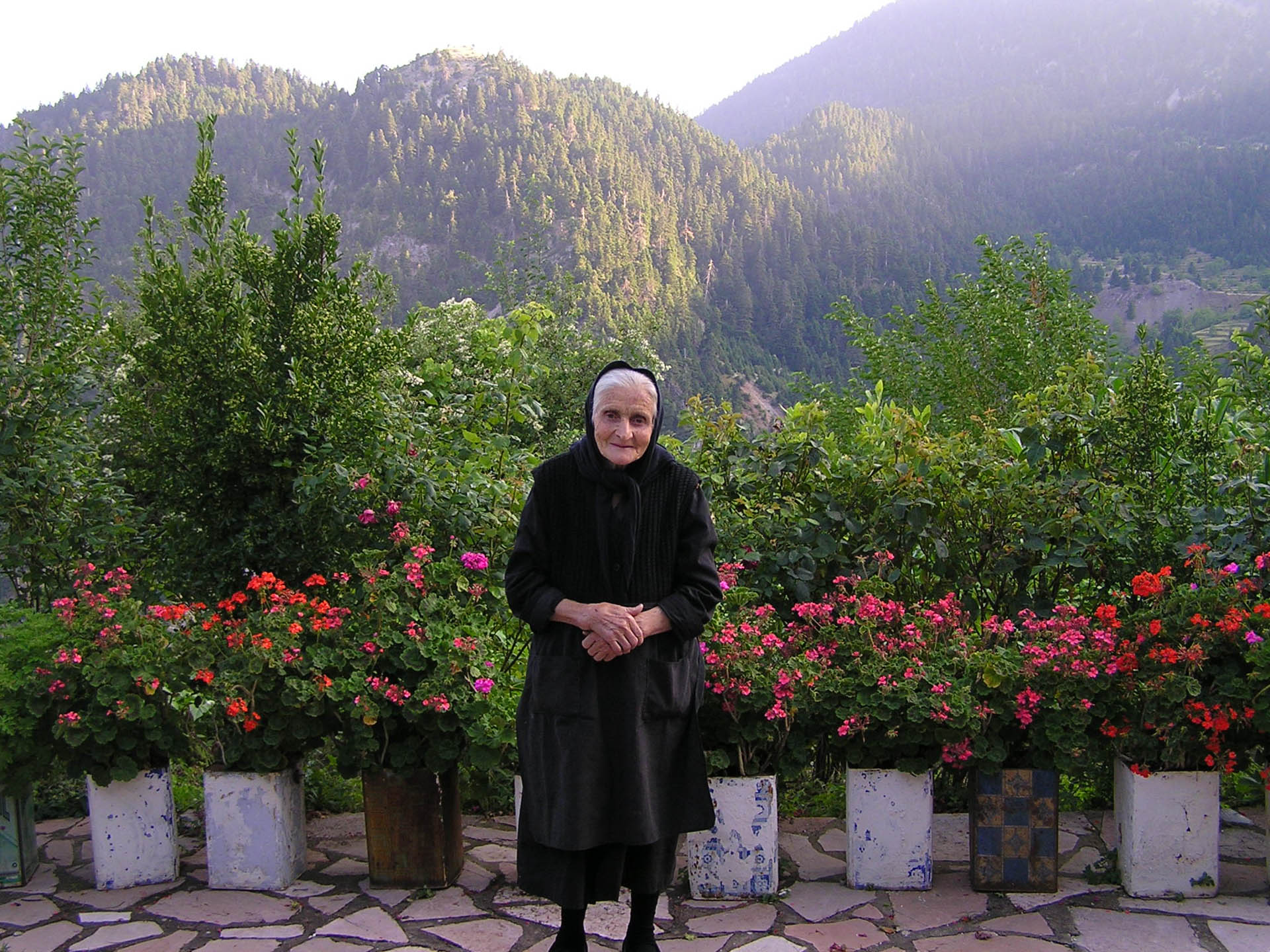The mountaineers, men of moderation and wisdom, abiding by the laws of nature, built their houses and churches in harmony with Space and Time.
The architecture of the buildings they created to live and keep their animals reflects their values and needs.
They built their houses guided by simplicity and functionality. They did not show off wealth, which, after all, they did not possess.
Of course, the school and church buildings stand out, and the residents boast about their cooperative spirit. They see them as everyone’s property. They build them in prominent locations with superior materials, mainly white stone and “keretsi,” a mixture of sand and lime.
Solid soils, away from creeks, are selected to construct their houses.
A good view is considered a positive element, but this does not decisively determine where they will build a house.
The floor plan of the houses is a rectangle, with the long side parallel to the mountain slope. Thus, almost all homes have the same orientation, with their long sides facing southeast, thus ensuring protection from the north winds and taking the most advantage of the sunshine.
On the south side, as a rule, they have the entrances, most of the windows, and the living room of the houses.
They open few, usually small windows on the north side, where they have the less-used rooms.
There are one or two-story houses. Upstairs is the main living space of the family. It consists of a small hall and two or usually three rooms. One is the living room, the winter room, where a large fireplace dominates the space. Around the fireplace, the whole family spends time during the long winters.
There is also a particular room that unlocks its doors to receive visitors at the celebrations.
Often, two rooms are separated by a four-leafed wooden door that opens for celebrations and mainly for weddings.
A two-story house uses the ground floor as a workshop, storage room, or animal stable.
An integral structural element in a two-story house is a balcony on the south side.
Usually, a sizeable semi-outdoor space, the “Krevata,” is built at the entrance. On the one hand, it protects the entrance; on the other hand, it is a functional space for the household’s everyday life.
They use white-red limestone for the houses’ corners, doors, and windows because it is easier to be chipped and gives a better aesthetic effect. However, because they mine the stone rather far away, in the “Skala” area, they need to carry it.
They choose the yellow-black stone, the “kehrini,” for the large wall surfaces because they find it in the settlement and mainly in the same place where they build the house.
Using simple traditional techniques, the inhabitants of the mountain village build the outer walls thick with stone and mud to act as thermal insulators, providing coolness in the summer and warmth in the winter.
They make the interior walls with “chatmas”. They support thin tree trunks at a distance of one meter from each other and nail on them horizontally boards or thin pieces of wood taken from the fir trunks. Then they coat the outer surface with mud. The gap created acts like a perfect insulator. Sometimes they fill this gap with soil.
They produced the lime needed by themselves until 1960. The existence of an area with the toponym “Asvestaries”(Limes) proves those mentioned above.
They covered the roofs with slate slabs brought from the area of Skala. The roof overhangs enough to protect the wall from the rain.
Cedarwood is used for lintels because it never rots, or chestnut wood, which is also very durable.
Usually, there is a building inscription on the front house wall with the year of construction and the owner’s or the builders’ initials.
A village house does not consist only of the main building, but it is a complex of buildings that cover the essential needs of the rural household. This complex includes a large hut for keeping the animals and storing feed and tools.
The kitchen, a minor construction where the fire almost constantly burns, is either inside the main house or next to it, in the house yard. In the yard, but also near the house, there is often an oven for baking bread.
The yard is an essential part of the residence. Its outdoor space is vital to daily living since many activities occur there. When the weather is fine, the family spends their free time there, and the children play. It is also often used as a workshop space. The yard extends to the accessible area not taken by the main building. Some large trees or vines provide the necessary shade.
A part of the yard is graveled with stone. There they pluck the corn, rub the oregano, and put the corn and the beans in the sun to dry well before storage.
Hydrangeas, basil, geraniums, mallows, chrysanthemums, and roses mainly thrive in the area. With extra care, the housewives cultivate the abovementioned flowers in tin pots or directly in the ground to beautify their cared yards. The abundant chestnut trees provide chestnut soil, which is excellent for flower care.

